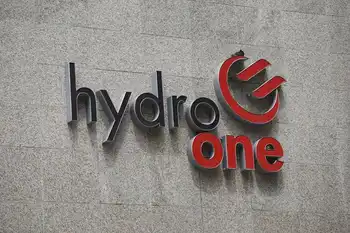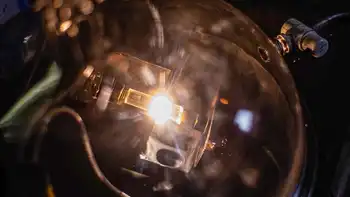Ontario to boost Renewable Energy Capacity, almost Darlington-size
- Ontario will add 3,000 megawatts of renewable energy generating capacity by 2014, says the province's commissioner of alternative energy, Steve Gilchrist. This is almost the equivalent of the Darlington nuclear generating station.
The announcement was welcomed by wind and water generators, who said it will provide them a steady market and a means of financing new projects.
But opposition politicians scoffed at the plan, which they said means the province will have to continue to operate dirty coal-burning generators for another decade.
Gilchrist said that starting in 2006 the province will get an additional 1 per cent of its energy needs from renewable sources each year for eight years. The 3,000 megawatts this will add to the province's portfolio will displace power generated by burning coal, which pollutes the air.
Theoretically, Ontario has about 30,000 megawatts of generating capacity, but when the province was using 25,000 megawatts of power on the hottest day last week, it had to import up to 3,800 megawatts.
Renewable sources include wind, solar, water, biomass, geothermal and gas captured from landfill sites. Incinerating garbage does not qualify as a renewable energy source, said Dan Miles, a spokesperson for Energy Minister John Baird.
The problem with renewable energy sources is that they're more expensive than conventional generators.
To secure the power, Ontario Electricity Financial Corp., or OEFC, will ask renewable generators to bid for the amount of electricity targeted for renewables each year.
If the lowest bids by the renewable generators average, say, 8 cents a kilowatt hour while the market price is 6 cents a kilowatt hour, OEFC will cover the difference to make the renewables competitive.
OEFC, which holds the debt left over by the old Ontario Hydro, is owned by taxpayers.
Gilchrist wouldn't estimate how much financing the gap would cost in total, but said consumers might pay an extra 50 cents a month on their power bills as the new power sources start to phase in, rising to perhaps $1.50 more a month by 2014.
Liberal MPP Jim Bradley dismissed the announcement as a "deathbed conversion" for the Conservatives after years of inaction on renewable energy.
"We're going to see coal being burned until 2015 because they didn't set an ambitious target," said Bradley (St. Catharines).
The New Democratic Party, for its part, would set a much more aggressive target for adding renewable generation, said MPP Marilyn Churley (Toronto-Danforth).
She added that the party would eliminate coal-burning generators by 2007.
But wind power generators were happy.
Mike Crawley of AIM PowerGen Corp., which is developing a wind farm on the north shore of Lake Erie, said the news "will certainly accelerate the development of the project."
Wind farms have high up-front costs that require financing, Crawley said.
"The single biggest question you have to answer is: Who's going to buy your power?" he said.
The government's announcement answers the question and makes financing easier, Crawley said.
Related News

Ireland and France will connect their electricity grids - here's how
DUBLIN - France and Ireland signed contracts on Friday to advance the Celtic Interconnector, a subsea electricity link to allow the exchange of electricity between the two EU countries. It will be the first interconnector between continental Europe and Ireland.
Representatives for Ireland’s electricity grid operator EirGrid and France’s grid operator RTE signed financial and technical agreements for the high-voltage submarine cable. The countries’ respective energy ministers witnessed the signing.
European commissioner for energy Kadri Simson said:
In the current energy market situation and the need to move away from imports of Russian fossil fuels, European energy infrastructure has become more important than…




